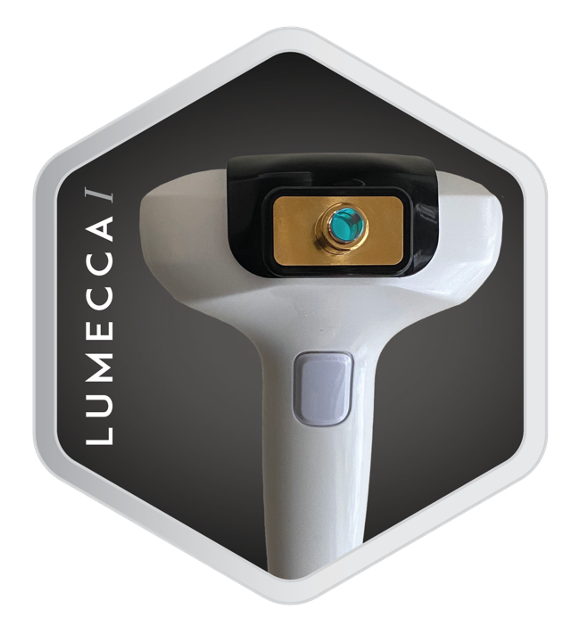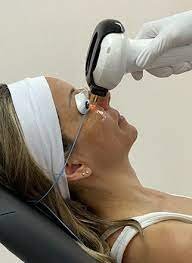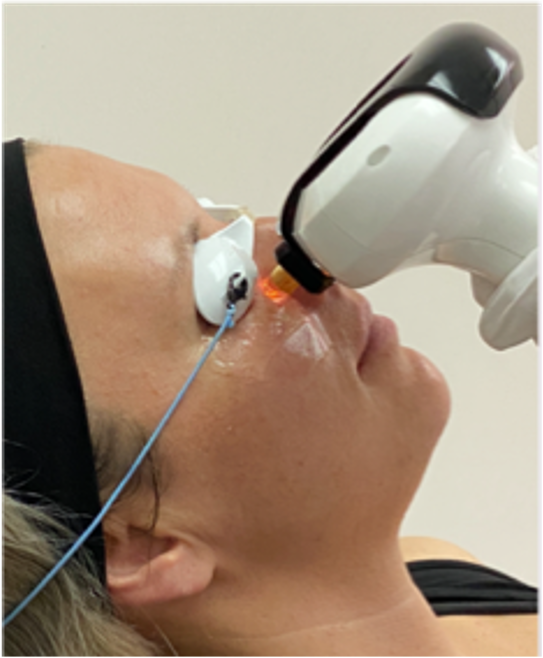Revolutionary Dry Eye
Treatment

Envision is the new in-office standard revolutionizing procedures in delicate areas. This ground-breaking, non-invasive, nonsurgical device, deploys multiple programmable modalities which work synergistically to deliver comfortable treatments to dry eye patients:
Forma-I: bipolar radiofrequency (RF)
Lumecca-I: intense pulsed light (IPL)
Envision's small-size applicators and precise depth control allow for safe and highly efficacious procedures in the small, more delicate subdermal layers of the periorbital region. With Envision, practitioners deliver non-drug therapies to improve patient quality of life.


INMODE Lumecca Intense Pulse Light Treatment (IPL) works to control the inflammatory process and to stop the vicious cycle of inflammation and to reduce the need for medications. IPL treats ocular rosacea, Meibomian Gland Dysfunction, and Inflammatory dry eye. It has been shown to decrease demodex and bacteria around the eyelids. The powerful bursts of light also close off blood vessels that release inflammation in ocular rosacea.
INMODE Forma Radiofrequency Treatment (RF) uses Radio-Frequency energy to generate heat which is applied to the skin around the eyes. This heat stimulates collagen formation, bringing white blood cells, and stem cells to the skin around your eyes while reducing inflammation. This treatment aids in opening up clogged meibomian glands, allowing for improved tear production and secretion. RF is usually followed by a Meibomian Gland expression.

Intense Pulsed Light (IPL) has been used for decades in many fields of medicine to help eradicate inflammation and strengthen collagen. While companies have been using IPL for Rosacea and to tighten the skin, InMode has for the first time optimized their IPL handpiece (Lumecca I) for use specifically on the lids to treat Demodex mites and Rosacea blepharitis, two of the main culprits in the cause of blepharitis and its associated dry eyes. The fact that it also strengthens the collagen and targets dilated blood vessels and pigmentation spots in the skin is a bonus!

No. Due to the light from the device being taken up specifically by the skin’s pigment, IPL cannot be performed on very darkly pigmented patients, and can only be used with great caution in patients of moderate pigmentation. If you are interested in IPL, please contact your ophthalmologist to determine if you are a candidate.

Yes! There are a few devices on the market that attempt to target the meibomian gland plugging. For both safety and efficacy reasons, I have chosen the Forma I by InMode for my patients. It is the newest, state-of-the-art technology for the in-office treatment of meibomian gland dysfunction. It is a one-of-a-kind device, in which InMode has, once again, optimized well- respected technology used for many years now for its use on the eyelids. It employs bipolar radiofrequency that delivers electric current to the dermis at the exact level of the meibomian glands. This produces heat at a highly regulated temperature to melt the solidified lipids that are blocking the glands.

Lumecca I can be likened to the feeling of a rubber band snapping against the skin, but is not painful. Patients actually tend to enjoy the Forma I procedure and say it seems similar to a “hot stone massage”.

As opposed to the IPL, patients of all pigment types can undergo radiofrequency for the meibomian glands. Beyond pigmentation questions, if you are interested in Forma I, it is always important to check with your ophthalmologist to see if you would be a good candidate.

NO. Neither of these procedures involves any type of harmful radiation. That is not a concern.

After instilling topical ocular anesthetic, I apply gentle pressure to the lid margins with a special flat forceps to express the old, poor-quality lipids from the glands so that the glands can begin to make new healthier oils for your tears.

Lumecca I/Lumecca takes about 2 - 5 minutes.
Forma I takes about 20 minutes.
Manual lid expression takes about 5 minutes.

I recommend you do warm compresses daily. If you are using any special creams for your skin, those may need to be stopped temporarily for a few days prior to the procedure.

There is minimal to no downtime to these in office procedures. I recommend patients use medical grade sunscreen (~SPF40+) for 3 weeks. A week after the procedure, you can return to your regular skin care regimen.

When treated for the first time, for the treatment of blepharitis and dry eye syndrome, most patients benefit from an initial four treatments, approximately one month apart. You may begin to notice significant improvement in your ocular symptoms even after the first treatment. After your initial series of 4 treatments, different patients may need one “tune up” anywhere between every 3 months to every year, depending on their individual needs.

Please, call the office for more information.
Dr. Kozlov is a Board Certified Ophthalmologist who specializes in Corneal and External Disease, and Comprehensive Eye Care. She has been practicing Ophthalmology for over 20 years and has been practicing in The Northwest Suburbs of Chicago since 2003.